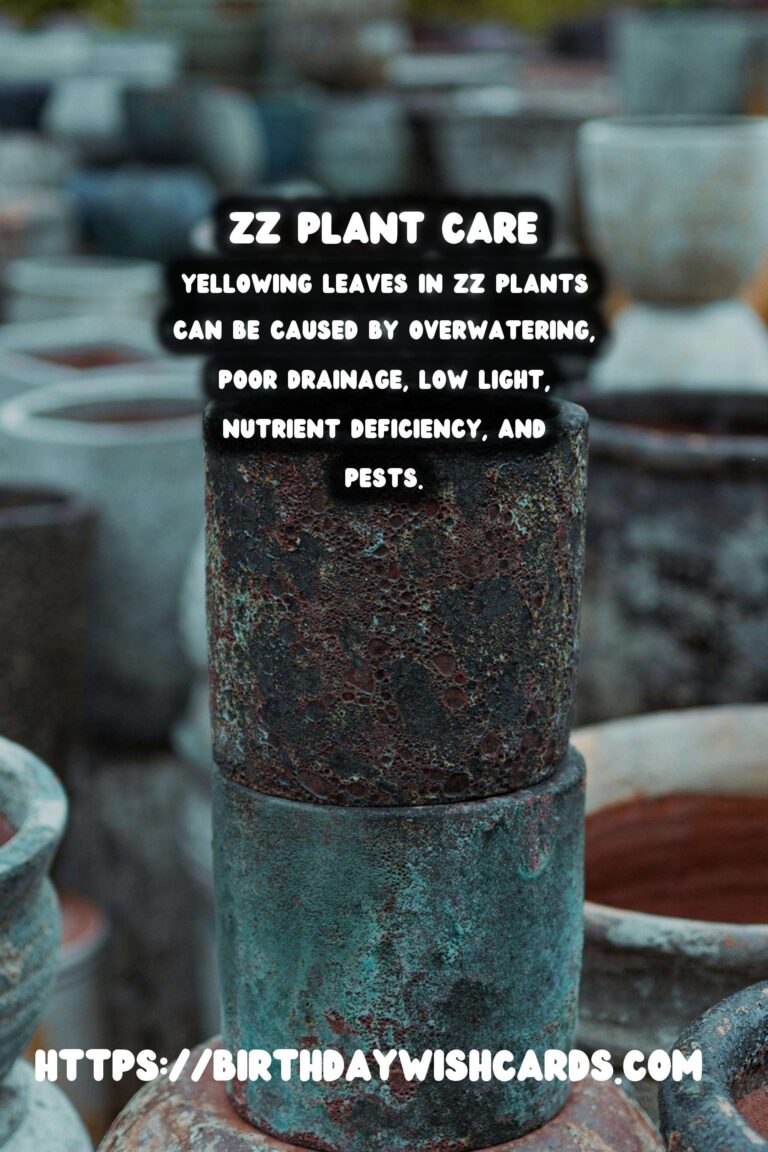
ZZ plants, scientifically known as Zamioculcas zamiifolia, are popular indoor plants valued for their resilience and low maintenance. However, even these hardy plants can sometimes exhibit signs of distress, such as yellowing leaves. Understanding the causes and solutions for yellowing leaves can help keep your ZZ plant healthy and vibrant.
Common Causes of Yellowing Leaves in ZZ Plants
Yellowing leaves on a ZZ plant can be alarming, but they are often a sign of underlying issues that can be corrected with proper care. Here are the most common causes:
1. Overwatering
One of the primary reasons for yellowing leaves in ZZ plants is overwatering. These plants are drought-tolerant and prefer to dry out between waterings. Overwatering can lead to root rot, which is detrimental to the plant’s health.
2. Poor Drainage
Poor drainage can exacerbate the effects of overwatering. ZZ plants need well-draining soil and a pot with drainage holes. Without proper drainage, water can accumulate at the bottom of the pot, leading to root rot and yellowing leaves.
3. Low Light Conditions
While ZZ plants can tolerate low light conditions, insufficient light can cause stress, leading to yellow leaves. They thrive in indirect sunlight and benefit from a brighter location.
4. Nutrient Deficiency
Lack of essential nutrients in the soil can also cause yellowing leaves. ZZ plants require a balanced fertilizer during the growing season to maintain their lush green appearance.
5. Pests and Diseases
Although ZZ plants are generally pest-resistant, infestations by pests like spider mites or diseases can lead to yellowing leaves. Regular inspection and prompt treatment can help prevent and manage infestations.
Solutions for Yellowing Leaves
1. Adjust Watering Practices
To prevent overwatering, ensure that the soil is dry before watering again. A good rule of thumb is to water the plant once every two to three weeks, but this can vary depending on environmental conditions.
2. Improve Drainage
Check that your pot has adequate drainage holes and consider adding perlite or sand to the soil to improve drainage. Repotting the plant in well-draining soil can also help.
3. Optimize Light Exposure
If your ZZ plant is in a low-light area, move it to a spot with indirect sunlight. Avoid direct sunlight, as it can scorch the leaves.
4. Fertilize Appropriately
During the growing season, feed your ZZ plant with a balanced, water-soluble fertilizer every month. Avoid over-fertilizing, as this can cause more harm than good.
5. Manage Pests and Diseases
Inspect your plant regularly for signs of pests or disease. If detected, treat the plant with insecticidal soap or neem oil. Keeping the plant clean by wiping down the leaves can also prevent infestations.
Preventive Measures
To prevent yellowing leaves in the future, establish a consistent care routine. Monitor environmental factors such as light levels, humidity, and temperature. Regularly check the soil moisture level and adjust watering accordingly. By providing a stable environment and meeting the plant’s needs, you can ensure that your ZZ plant remains healthy and vibrant.
Conclusion
Yellowing leaves in ZZ plants can be a sign of various issues, but with careful observation and adjustments in care, these problems can be resolved. By understanding the causes and implementing the appropriate solutions, you can maintain the health and beauty of your ZZ plant.
Remember, patience and consistency are key when caring for houseplants. With the right attention, your ZZ plant will thrive and continue to be a stunning addition to your home.
ZZ plants are popular indoor plants known for their low maintenance. Yellowing leaves in ZZ plants can be caused by overwatering, poor drainage, low light, nutrient deficiency, and pests. Proper watering practices and ensuring adequate drainage can prevent yellowing leaves. ZZ plants need indirect sunlight and a balanced fertilizer during the growing season. Regular inspection for pests and maintaining a consistent care routine can keep your ZZ plant healthy.
#ZZPlant #IndoorPlants #PlantCare #YellowLeaves

